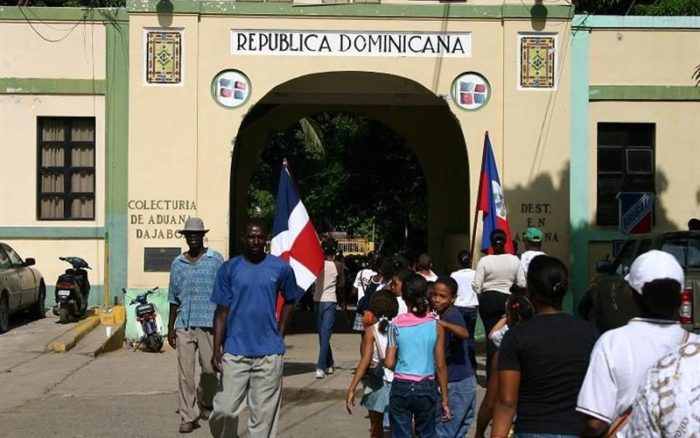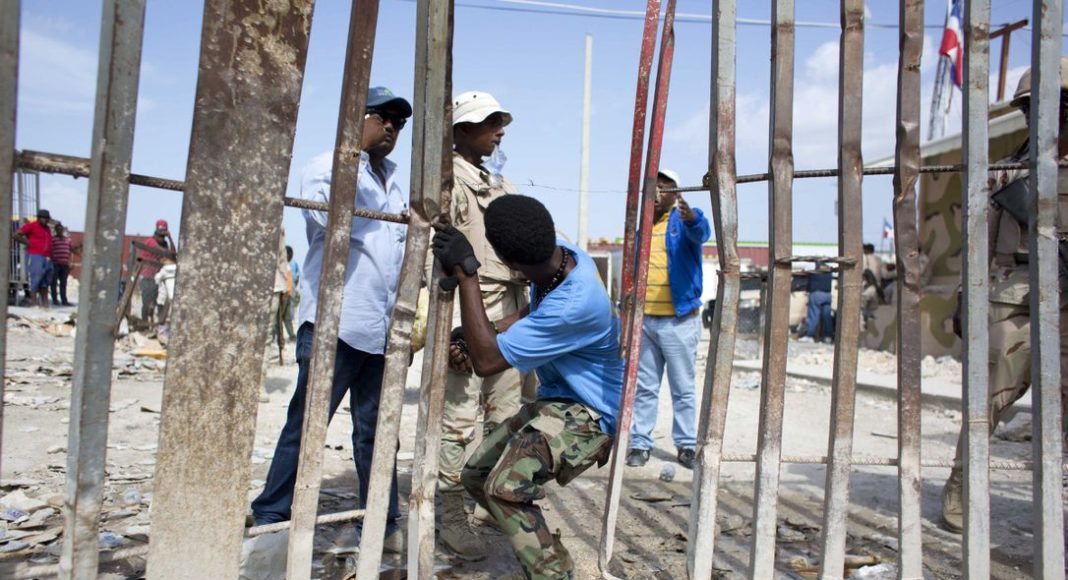The Dominican Republic has begun construction of a four-metre high concrete wall along its 244 mile border with Haiti.
The wall was mooted in 2021. Inaugurating the work on 20 February 2022, President Luis Abinader claimed:
‘This barrier will benefit both countries, as it will allow us to control much more efficiently bilateral trade, and regulate migratory fluxes so as to fight against people smuggling mafias, drug trafficking and illegal arms sales.’
But human rights groups on both sides of the border have protested that the move will only increase tension between the two countries.
Santiago Riverón, the mayor of Dajabón, one of the main crossing points between the two countries, told Agence France Presse that the real wall between the two countries was the economy, and accused the Dominican military of extorting money out of Haitian migrants to allow them to cross the border.

Antonio Michel Feliz of the Dominican Haitian Human Rights Committee said that he thought the building of the wall was a reaction by the Dominican government to the current insecurity in Haiti: ‘I think that short or long term, this will bring many conflicts.’
William Charpentier, coordinator at the National Coalition for Migrations and Refugees believes that in reality the wall ‘will increase people trafficking costs, and of weapons and organ trafficking.’
The wall, which will cover the most sensitive half of the border, is projected to take nine months to complete. It will cost more than $30 million, and include 70 watchtowers and 41 access gates.
A war against immigrants
Since becoming president in August 2020, Abinader has introduced several measures aimed at curbing illegal immigration from its western neighbour on the island of Hispaniola.
According to the New York-based Haitian Times newspaper, Abinader has suspended a student-visa program for Haitians, prohibited companies from drawing more than 20% of their workforce from migrant workers and ordered Haitian migrants to register officially.
More than 200,000 Haitians previously granted immigration status have been asked the register again, and the president has said that anybody transporting or housing illegal immigrants will face fines.
In November 2021, Jesús Vázquez, the Dominican Minister of the Interior and Police told reporters that ‘the main problem facing our country is Haiti, and we have to defend our homeland’.
A 2018 survey found that approximately 500,000 Haitians and their descendants were living in the Dominican Republic, often working in the poorest paid jobs in agriculture or construction.
This number has grown considerably since then, as economic and social conditions in Haiti have worsened, following a devastating earthquake in 2010 that killed more than 200,000 people, and continuing political and institutional instability.
President Abinader pointed to the difficulties being faced in Haiti since the as yet unsolved assassination of its president Jovenel Moïse in July 2021.
Justifying the construction of the wall, Abinader said: ‘The grave institutional and security crisis in Haiti has led its population to a worrying situation of political and social instability, as well as an endemic economic and food crisis.’
He argued that his country had always come to the aid of its neighbour, but could not be expected to resolve its grave problems on its behalf.
The Dominican Republic, with some 11 million inhabitants, has an average GDP four times greater than its neighbour, the poorest country in the western hemisphere.
Racism in the mix
This latest move is part of a long history of tension between the two countries, which many observers see as racism. The Spanish-speaking Dominicans are more racially mixed than Haitians, whom they regard as racially inferior.
The most violent expression of this hostility came in 1937, when the Dominican dictator Rafael Leónidas Trujillo sent his troops to the border region, where they killed between 10,000 and 20,000 Haitians.
This became known as the ‘Parsley Massacre’, so-called because the Dominicans thought black Haitians could not pronounce the Spanish word for ‘parsley’ –‘perejil’ properly.
Because of the crisis in their country, many thousands of Haitians have tried to leave, not only to the Dominican Republic but to Central America, Brazil and the United States.
President Joe Biden was criticised by human rights groups in 2021 when he reinstated deportation flights for Haitians who had crossed into the United States from Mexico.

